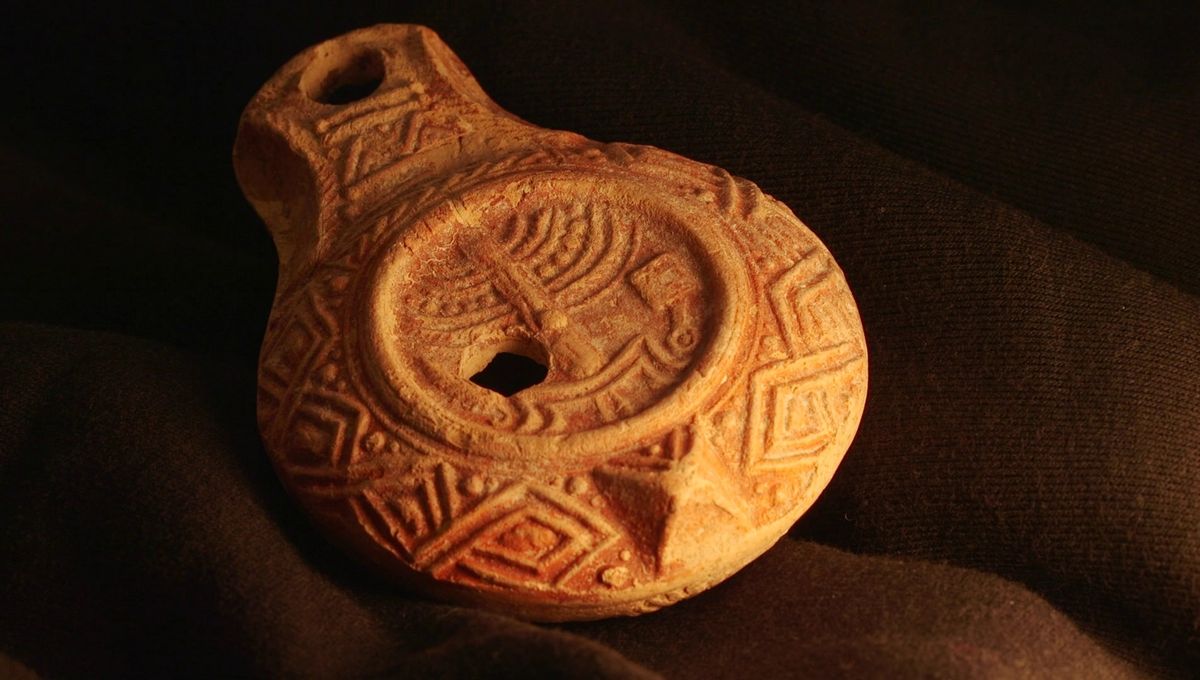
Archaeologists have unearthed an incredible ceramic oil lamp from the Late Roman period. Although this isn’t a genie-containing situation, it is decorated with depictions of the Temple menorah, incense shovel, and lulav (date palm branch) used in Jewish religious rituals.
The lamp was recovered as part of a dig at a site near the Mount of Olives in Jerusalem and represents a unique find. Soot marks on its nozzle suggest it was used for lighting around 1,700 years ago, offering us a rare glimpse into Jewish culture and religious life from the period.
“The exquisite artistic workmanship of the lamp, which was found complete, makes it an outstanding and extremely rare”, Michael Chernin, excavation director on behalf of the Israel Antiquities Authority explained in a statement sent to IFLScience.
“This finding is particularly surprising, since, we have very little evidence of the existence of a Jewish settlement in and around Jerusalem from this period.”
Between 132 and 136 CE, the Jews of Judea, led by Simon bar Kokhba, conducted a rebellion against the Roman Empire at the end of a period of heightened clashes between Jews and Romans. As a result of what is now known as the Bar-Kochba rebellion, Emperor Hadrian expelled the Jews from the city of Jerusalem.
“The Mount of Olives lamp is one of the few material traces of a Jewish presence around Jerusalem in the 3rd-5th centuries CE”, Chernin added.
The lamp appears to belong to the “Beit Nattif” type, named after its production workshop that was identified in the 1930s near Bet Shemesh. The Beit Nattif potters excelled in making fine ornamentations and lamps with Jewish religious symbols. The presence of these Jewish lamps suggests there was still some Jewish presence in the area after the rebellion.
“The choice of symbols on the lamp is not accidental”, Benjamin Storchan, Israel Antiquities Authority research archaeologist, explained. “This is a fascinating testimony connecting everyday objects and faiths among ancient Jerusalem’s inhabitants. It seems that the lamp belonged to a Jew, who purchased it because of its religious affiliation and memorial to the Temple.”
It seems the lamp maker dedicated a significant amount of time to creating and decorating the object. It was made using carefully carved limestone molds, drills, and chisels. The molds were made in two parts – upper and lower – that were filled with clay and then pressed together. The vessel would then have been fired, after which was ready for use.
“This method of producing lamps in molds allowed for refined designs, as well as the addition of delicate and intricate decorations”, Storchan added.
“The Temple menorah became a Jewish symbol in the Second Temple period. However, after the Temple’s destruction, the menorah image became an important icon in the Jewish collective memory both within Israel and the Diaspora. The menorah occasionally appears on personal objects such as oil lamps, which – being an illumination vessel, perhaps evoked a feeling of lighting the Temple menorah.”
The lamp will be shown to the public during the Chanukah holiday, alongside stone molds used to make similar ceramic vessels.
Source Link: Rare 1,700-Year-Old Oil Lamp With Temple Symbols Found In Jerusalem